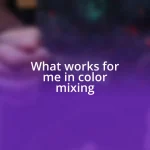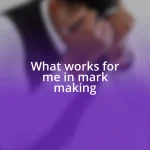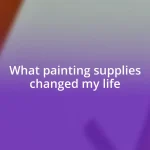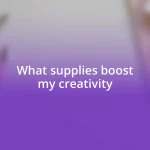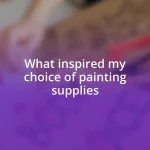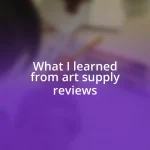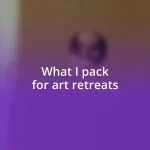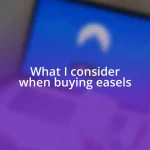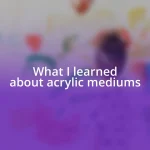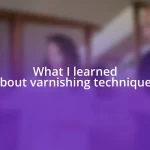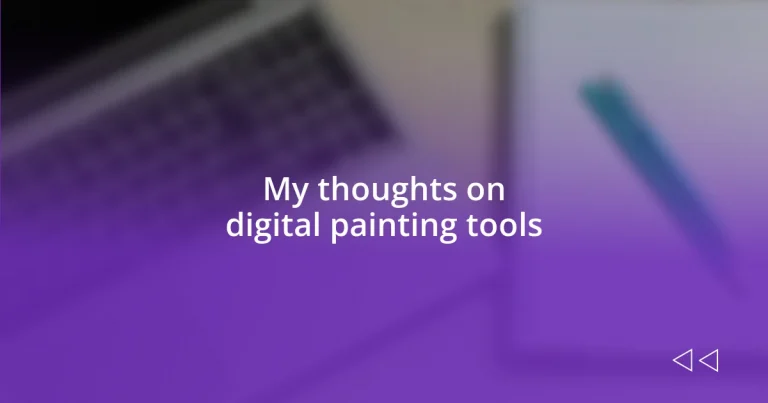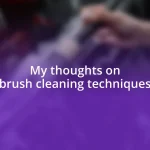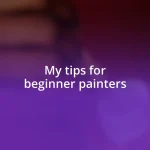Key takeaways:
- Understanding the essential features of digital painting tools, such as brush variety, user interface, and layer management, enhances creativity and experimentation.
- Choosing the right software and hardware, like a quality graphics tablet and a powerful computer, significantly improves the digital painting experience.
- Regular practice, workflow optimization through organization, and using presets can elevate efficiency and creativity in digital painting.
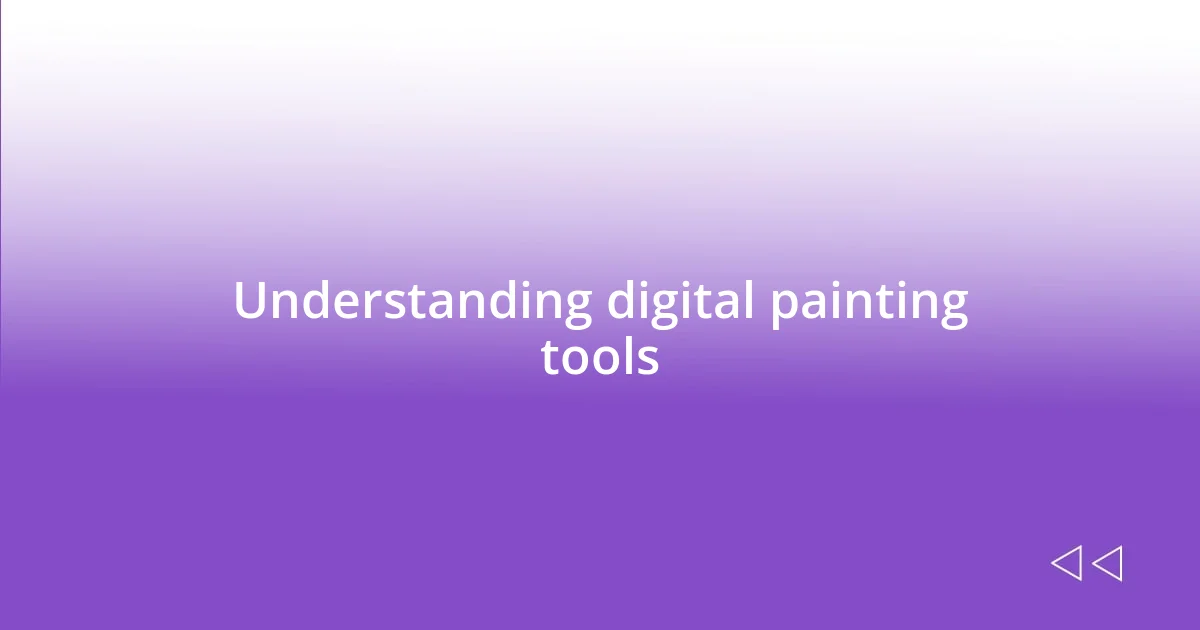
Understanding digital painting tools
Digital painting tools can feel both exhilarating and overwhelming. I remember the first time I tried using a tablet; it was like being given the keys to a hidden world of creativity. The sheer variety of brushes, layers, and colors available can ignite your imagination but can also make you wonder, “Where do I even begin?”
As I explored various software options, I realized that understanding the basic functions of these tools is crucial. Each program has its own unique features that cater to different styles and techniques. For instance, I found that a program with robust layering capabilities opened up my painting to a whole new dimension—it allowed me to experiment without fear, mixing and adjusting elements in a way that traditional paint simply can’t replicate.
One essential aspect of digital painting is the versatility it offers. Do you want to sketch, paint, or create detailed illustrations? Digital tools let you transition seamlessly between these styles. I often find joy in adjusting brush settings to create textures that mimic traditional mediums, giving me a deeper connection to my work. Engaging with these tools is not just about skill; it’s about what they can help you express within yourself.
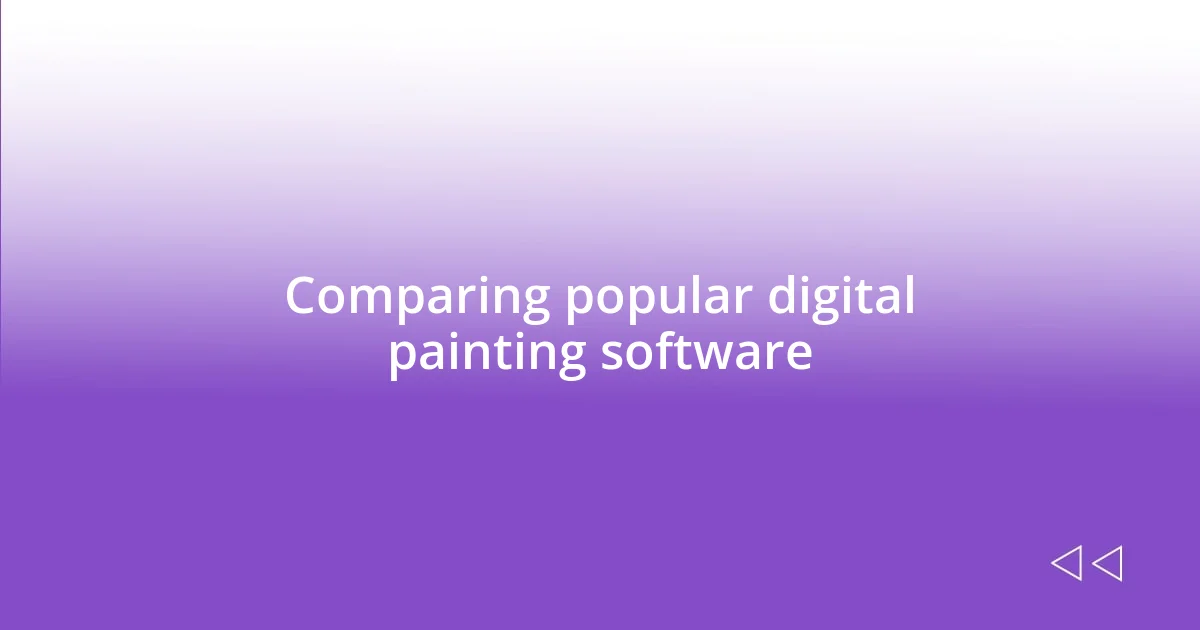
Comparing popular digital painting software
When comparing popular digital painting software, I often look for how each tool resonates with my artistic process. For instance, I’ve tried Adobe Photoshop, which is a powerhouse, but I found myself overwhelmed by its vast array of options. On the other hand, Procreate’s intuitive interface drew me in; I appreciated how quickly I could start a project and focus solely on my creativity. Each software offers something different that can either enhance or inhibit your experience.
Here’s a quick comparison of some software I’ve used:
- Adobe Photoshop: Versatile and powerful, great for detailed illustrations; however, it has a steep learning curve.
- Procreate: User-friendly and mobile, perfect for quick sketches; its brush customization is impressive.
- Corel Painter: Mimics traditional painting techniques well, but can feel heavy on resources.
- Clip Studio Paint: Amazing for comics and illustrations, with useful tools for line art.
- Krita: Open-source and free, offers fantastic brushes for those on a budget, though it may lack some advanced features.
Each time I switch between these programs, I’m reminded that my choice often reflects my mood and desired outcome for the piece.
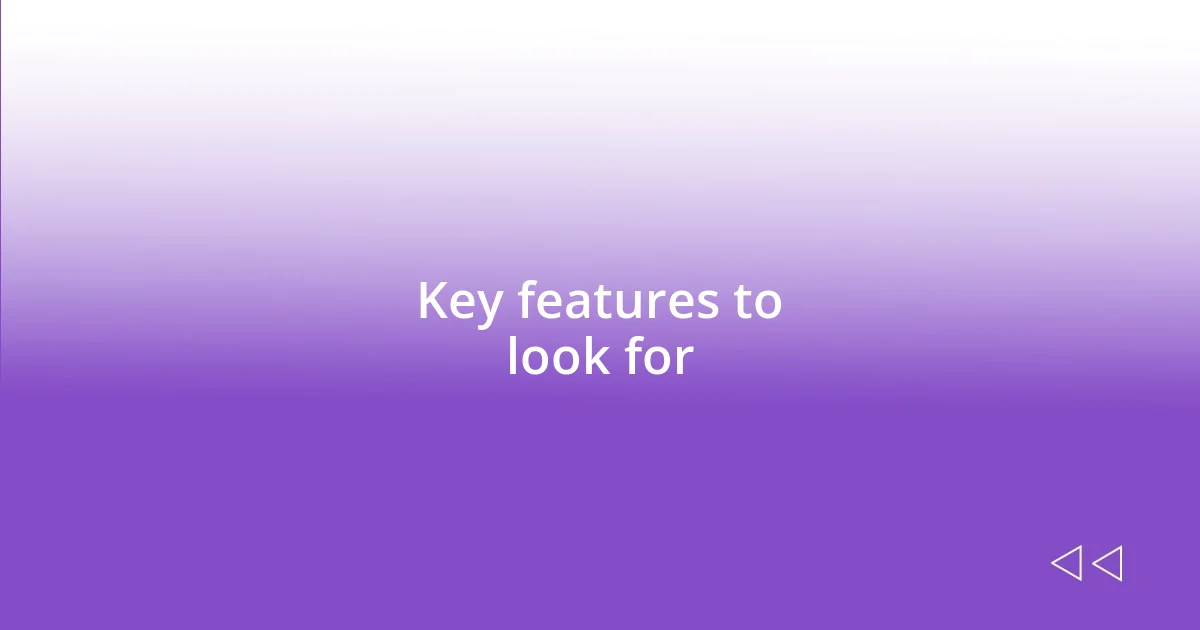
Key features to look for
When selecting a digital painting tool, one of the most crucial features to consider is the variety of brushes available. Personally, I’ll never forget the thrill of discovering a brush that perfectly replicated the feel of charcoal on paper. It felt like a moment of magic, and I realized that the ability to customize brushes is paramount. Being able to emulate a variety of textures not only enriches the artistic experience but also elevates the final product.
Another key aspect worth exploring is the user interface. I’ve walked away from programs with complex navigations, feeling frustrated rather than inspired. For me, an intuitive layout that allows for easy access to tools enhances creativity and keeps the flow smooth. It’s essential to choose software that caters to your style, as it can make the difference between a joyful journey and a cumbersome process.
Lastly, strong layer management is a non-negotiable feature in any digital painting tool. I remember a project where layers saved me from a major disaster—I accidentally painted over an element, but thanks to the layers, I was able to revert back seamlessly. Having the ability to manipulate layers allows for freedom and experimentation that I find invigorating. It’s crucial to look for tools that support complex layering structures to unleash your creativity fully.
| Feature | Description |
|---|---|
| Brush Variety | Different types of brushes for various textures and styles. |
| User Interface | Intuitive layout for easy navigation and enhanced creativity. |
| Layer Management | Strong layering capabilities for experimentation and project recovery. |
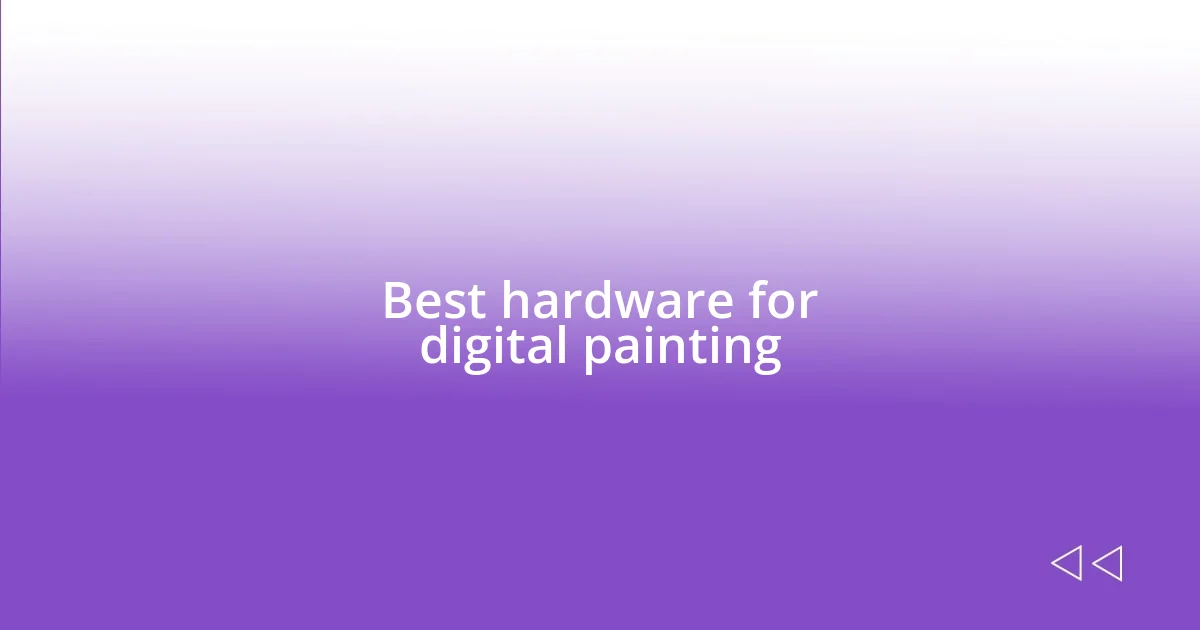
Best hardware for digital painting
When it comes to hardware for digital painting, a quality graphics tablet is an absolute game-changer. I vividly remember the moment I upgraded to a Wacom Cintiq; the feeling of drawing directly on the screen transformed my workflow. It’s not just about precision; it’s about that connection with your art that really elevates the experience.
Beyond the tablet, having a powerful computer is essential. I’ve faced frustrating slowdowns while working on complex pieces with my old machine, and it felt like my creativity was being stifled. Investing in a robust system, preferably with a dedicated graphics card, ensures you can handle larger projects without those pesky lag times. Doesn’t it feel great to focus solely on creativity rather than technology?
Lastly, let’s not overlook the importance of a color-accurate monitor. I recall the first time I calibrated my display properly; the colors just seemed to pop, and it made all the difference in my paintings. It’s amazing how a little adjustment can turn a good piece into something truly stunning. For me, seeing the true representation of my work can ignite excitement and drive my passion further. Don’t you want to create with clarity?
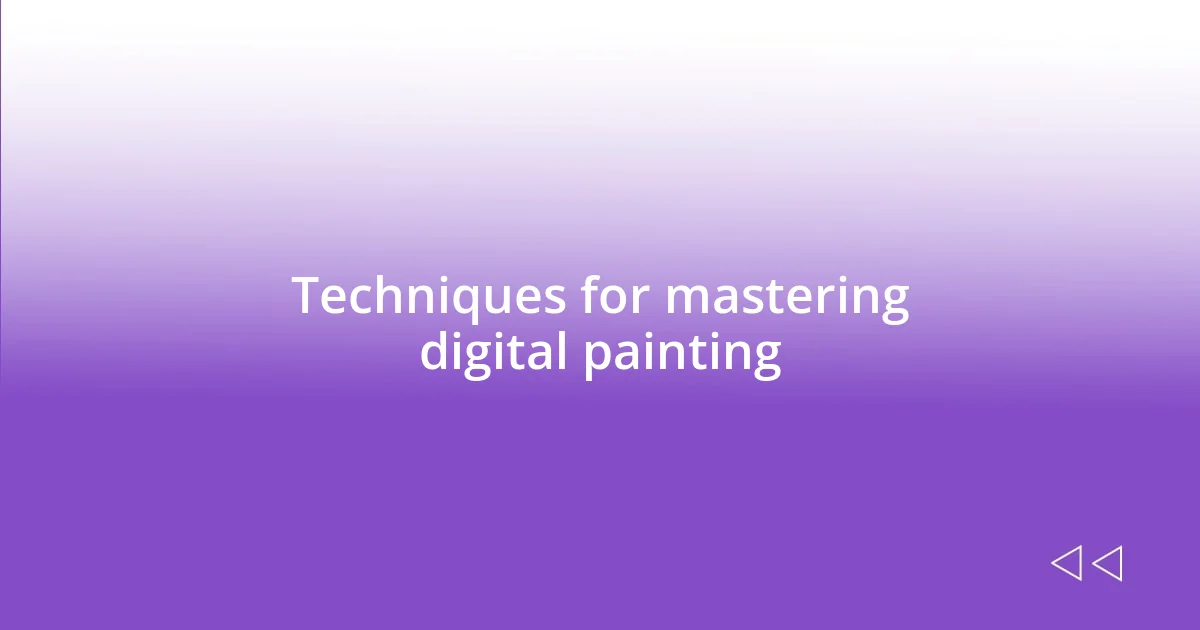
Techniques for mastering digital painting
One technique I’ve found invaluable in mastering digital painting is the practice of layer blending. When I first experimented with different blending modes, it was like unlocking a treasure chest of possibilities—each mode creating a unique interaction between colors. Have you ever played around with these settings? It can completely transform your artwork, allowing for depth and dimension that I often think would be impossible with traditional methods.
Another approach that has helped me is using brushes with varying opacity and flow settings. I remember the excitement of discovering how these small adjustments could breathe life into my characters, making them appear more dynamic and real. It’s astonishing how much you can convey emotion with just a few tweaks to a single brush. Do you notice how a soft stroke can evoke sincerity, while a sharper line might communicate tension? By understanding these subtleties, we can enhance our storytelling through our art.
Lastly, I believe that setting aside time for regular practice is essential. I’ve always followed a routine where I dedicate a portion of my day to sketching without the pressure of perfection. This has not only improved my skills but also sparked my creativity. Do you give yourself the space to play with ideas? Embracing the process rather than fixating on the final result can free you creatively, resulting in genuine growth as an artist.
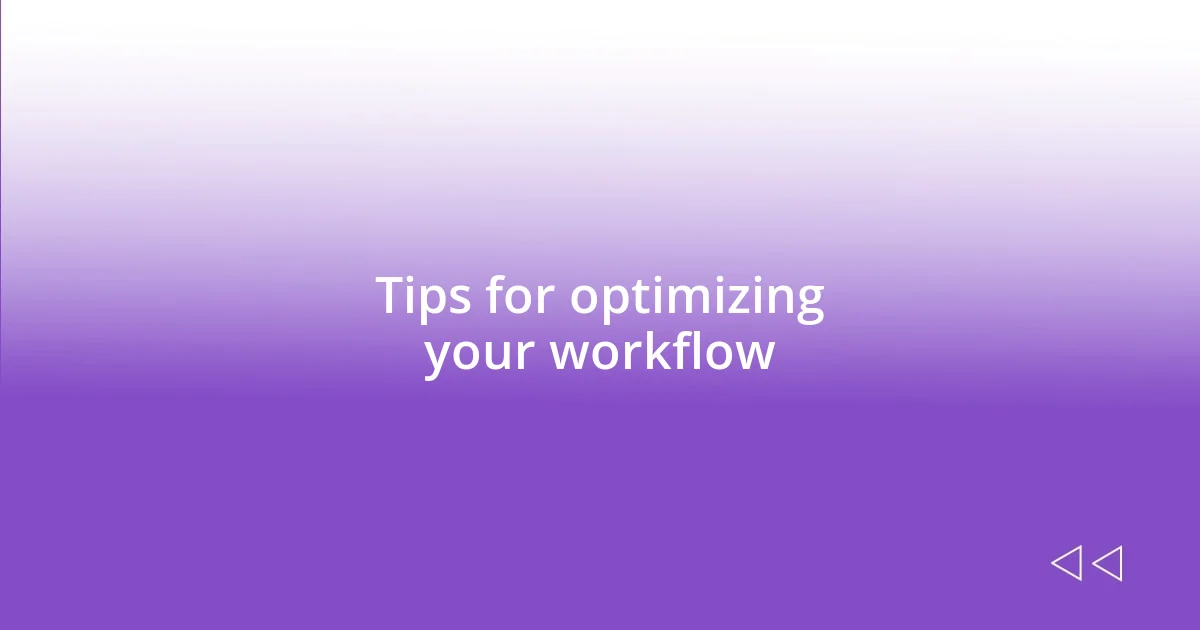
Tips for optimizing your workflow
Optimizing your workflow in digital painting can truly elevate your creative process. One of my go-to strategies is organizing my workspace. I remember spending hours searching for the right brush, feeling distracted and frustrated. Now, I have a customized toolbar that puts my favorite tools front and center. Have you ever considered how much smoother your workflow could be with a bit of organization?
Another tip that significantly boosted my efficiency is creating presets for my brushes and colors. In the past, I’d find myself constantly re-adjusting settings, which interrupted my flow. By saving these preferences, I can effortlessly jump into painting without losing momentum. Doesn’t it feel satisfying to streamline those repetitive tasks?
Finally, don’t underestimate the power of breaks. I used to power through long sessions, convinced that it would help me finish faster. However, I learned that taking short breaks to step away and recharge often leads to fresher ideas and renewed focus. Have you ever noticed how stepping back can grant you a new perspective on your work?
